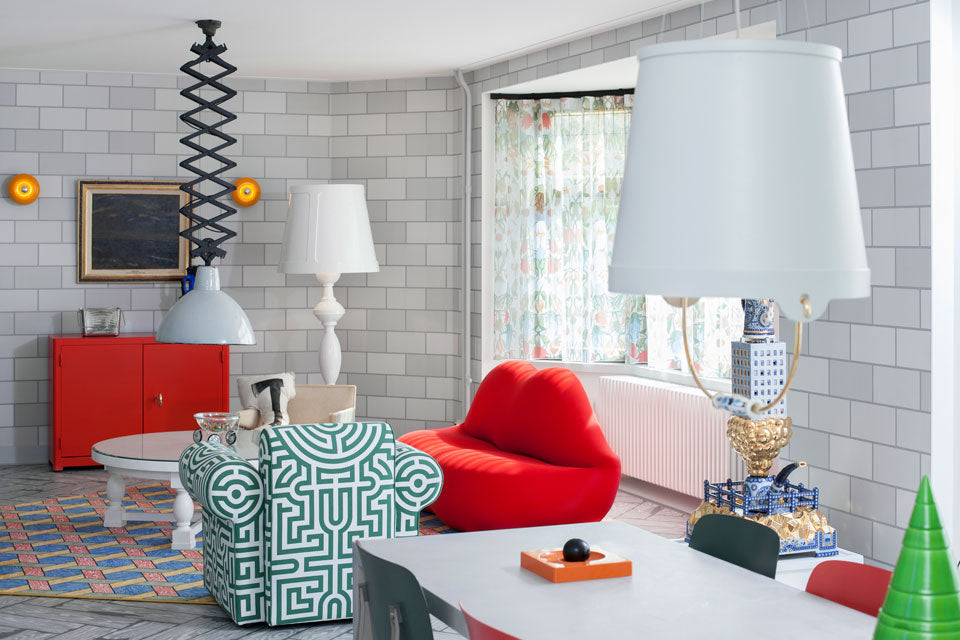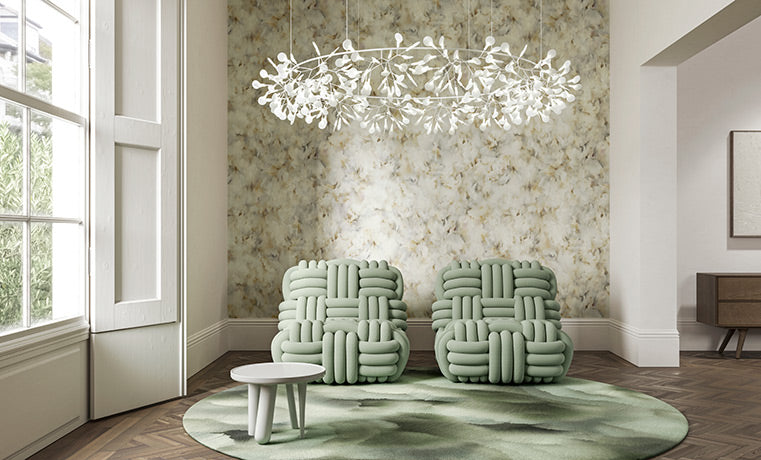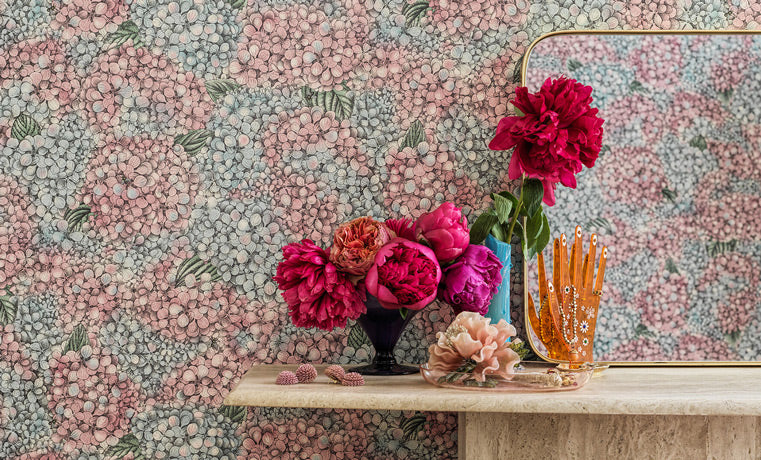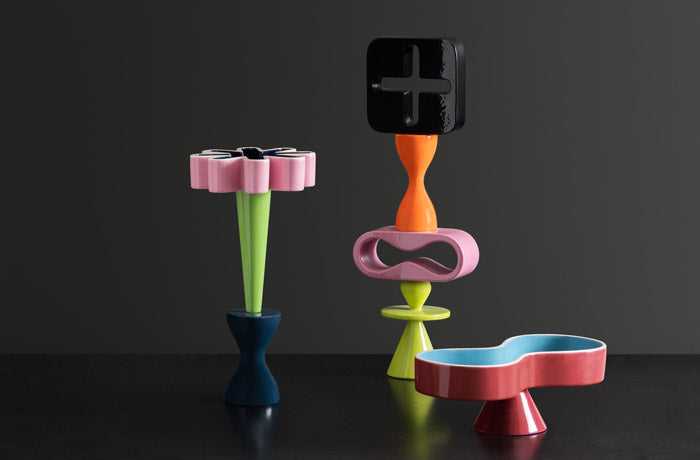
Studio Job have transformed an early 20th century Dutch apartment into a dream "crash pad for maximalists." The Dutch-Belgian creative duo bought the 150 sqm flat on the second floor of a 1922 townhouse in the Oud Zuid neighbourhood of Amsterdam with the intent to self-commission the interior.
Above: The main living room features Studio 65’s iconic 1970 Bocca Sofa for Gufram and a vintage scissor pendant lamp, as well as choice works by Studio Job for Moooi including Labyrinth Chair, Paper Floor Lamp, Bucket Ceiling Lamp and Hexagon Rug for Moooi carpets. Hanging on the wall is a Marine painting by Constant Permeke with Pox Wall Lamps by Ingo Maurer on either side. The windows are dressed with Withered Flowers curtains by Studio Job for Exposize.

"It’s a very concrete situation, a way for us to put to use the midcentury furniture we collect, the contemporary work of friends and artists, and our own work – to take it out of storage and ensure that it doesn’t just sit there collecting dust," Smeets told Wallpaper* Magazine. Studio Job Suite, much like Studio Job Loft, acts not only as a residential space and investment project - but in Smeets' words, as a "Giant Gesamtkunstwerk."
Above: Job Smeets and Nynke Tynagel with their 2014 ‘Globe’ cabinet for Gufram, and on the table, a 1970 breakfast tableware set by Pierre Cardin for Franco Pozzi.

In a world where the phrase 'less is more' reigns, the suite's interior goes against the grain in typical Studio Job fashion. A new and yet-to-be-released 'wallpaper by Studio Job for NLXL, runs throughout most of the apartment, so too does the playful interpretation of wooden parquet flooring, also designed by the duo for Senso. Typically these products would be used in small doses, but not in the world of Smeets & Tynagel.
Above: Studio Job’s ‘Paper Buffet Patchwork’ for Moooi is home to a 1968 ‘Cirkellamp TC6’ by Aldo van den Nieuwelaar and a 2014 ‘Carter’ vase by Floris Hovers for Cor Unum.

With so many clashing colours, patterns and styles all situated in one space, it's a wonder how this apartment works, but ultimately it does. In the words of Oscar Wilde, “Beauty is a form of Genius - is higher, indeed, than Genius, as it needs no explanation."
Above: A reimagining of a 17th-century flower pyramid by Studio Job for Royal Tichelaar Makkum.

Above: A 1960s bench designed by the Dutch architect and monk, Dom Hans van der Laan, for St Benedictusberg Abbey in Mamelis, Vaals. Featured on the wall is a poster of Gerrit Thomas Rietveld’s ‘Red Blue’ chair.
Photography: Lonneke Van Der Palen





